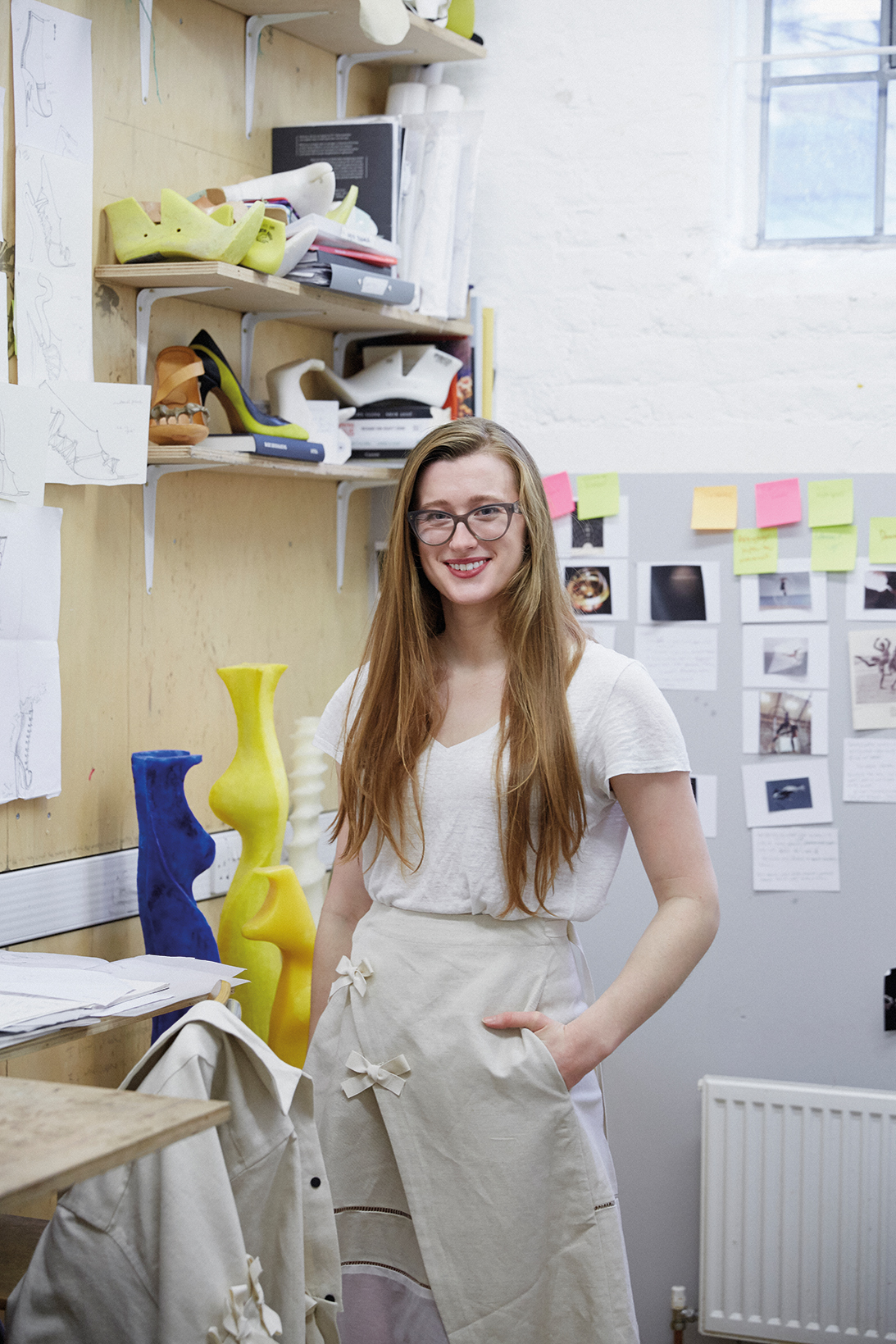Behind the doors of a very nondescript building behind the canals of Haggerston in east London is the Sarabande Foundation. More than 20 years ago, the foundation was set up by famed fashion designer, Lee Alexander McQueen as space for creative minds to work. Named after McQueen’s 2007 Spring/Summer collection, the foundation provides scholarships to students, as well as being a physical space to house artist studios. When you visit, you find McQueen’s personal art collection scattered throughout the building. The foundation also offers its artists mentoring, peer-to-peer support, workshops and a gallery space to show off their work. On a bright spring morning, we sat down with four of the foundation’s brightest creatives to get a glimpse into their working worlds.
You can read about them in our latest issue, and you can meet footwear designer, Kristina Walsh below.

Kristina Walsh. Photo by Kristy Noble
There’s something poetic about shoes and the idea that they walk you through life. They affect how you move in your environment. I trained as a footwear designer and, while studying, I saw an exhibition that featured a prosthetic leg and my mind was blown. I knew that’s what I wanted to work with because essentially it’s a shoe. The way that something looks really affects how people feel about their bodies. It will become a part of her wardrobe and the beauty of the design must be considered.
There are so many different emotional experiences to losing a limb and when working with an amputee there are a lot of big issues you’re working with. You have to involve the person who you’re designing for because you’re designing a part of their body and life. I am working with a performer named Erin, who is an amputee, and it was so incredible watching her try on my designs for the first time. Emotionally, it was indescribable – it will be part of her. We started with two prototypes carved from wax that she chose from. You have to consider everything from how tall they’ll be to how heavy. Once the final design is chosen, they’ll then be made from carbon fibre. I’m working with other disabled and non-disabled dancers and performers who have adapted their practices to suit new movement. My designs have to be functional, so it’s a really specific way to work when you’re designing for people who have to dance. This practice makes you think about how you use footwear.
A lot of my work is not just about physically connecting people, but emotionally too. I also design jewellery and even when I design rings I want there to be an element of feeling and touch about them. I learnt how to work with jewellery from my Sarabande neighbour James so being here really helps you work across disciplines.
Meet three other creative women from the foundation in our latest issue
